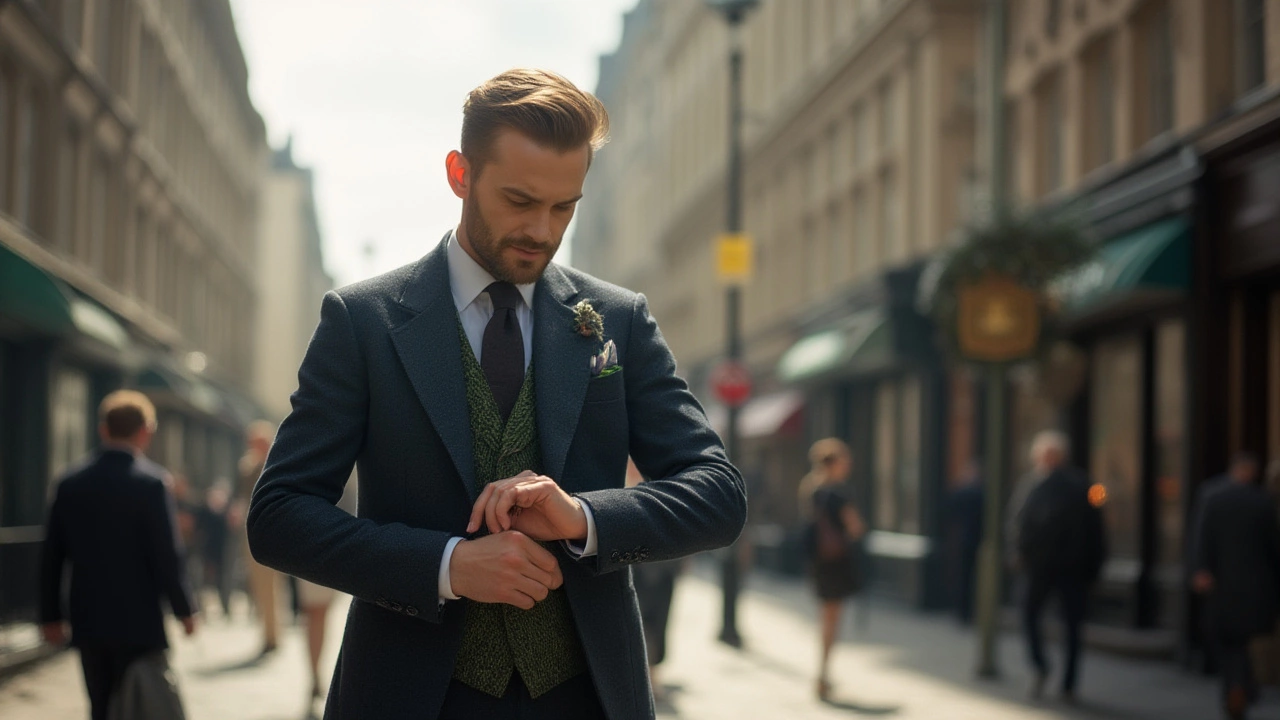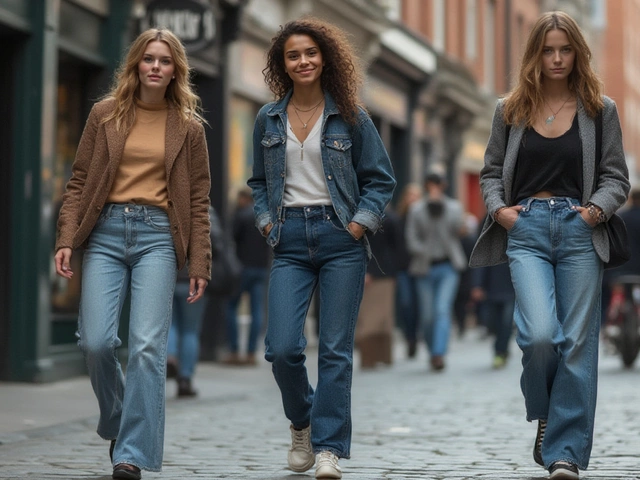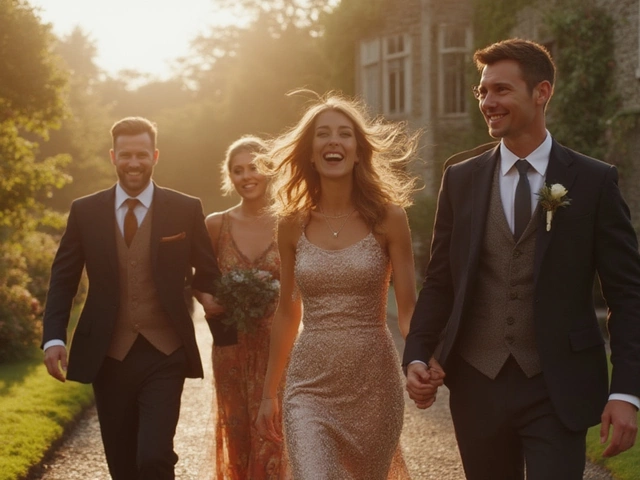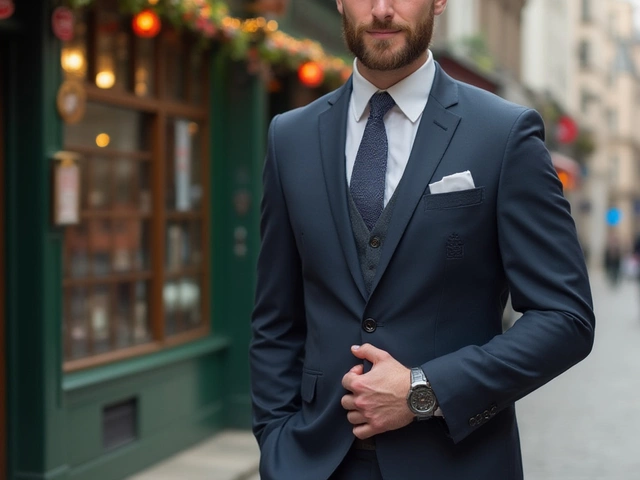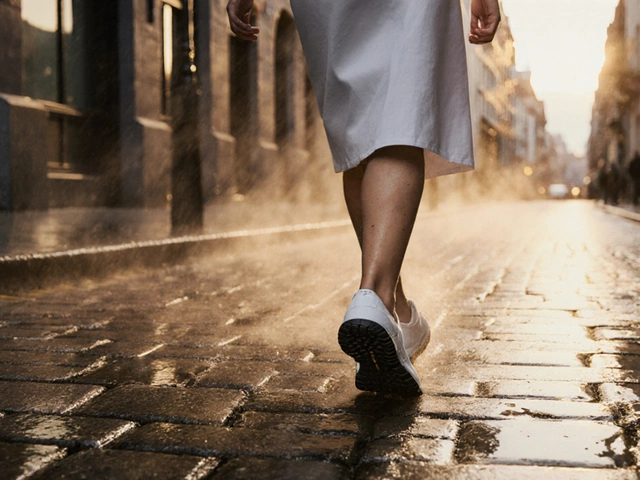If you’ve ever strolled through the lobby of the Shelbourne in Dublin or caught the tailored crowds streaming out of the Four Courts at lunchtime, you know there’s an instant difference between a suit that simply ‘gets by’ and one that looks straight-up expensive—even when it’s not splashed with logos. In the Irish market, style’s got its own rules: weather-proofing is an actual consideration, every mammy has an opinion on sleeve length, and wearing a suit ‘that fits’ means something much more precise than just ‘it goes on’.
Why Fit Rules All: Tailoring as the Irish Secret Weapon
If you could only do one thing to make a suit seem expensive, it’s tailoring. Anyone in Ireland who wears a suit more than once a year has war stories about alterations on South Anne Street or a heroic last-minute rescue by a local seamstress in Galway. Off-the-rack suits are everywhere, but the Irish have developed a sixth sense for spotting a sleeve too long or a trouser puddling at the ankle. Cut is everything. Your jacket should hug your shoulders (not bury them), the hem should land just at your knuckles when your arms relax, and any pulling at the button means you’re cheating yourself out of sharpness.
Dublin-based tailors like Louis Copeland & Sons have built their name on getting Irish men and women fitted for every kind of climate and occasion. They don’t just trim trousers—they tweak lapels, shift button placements, and sometimes even change out the lining to something faintly quirky (think green paisley or subtle Irish linen if you want a wink to home soil). According to a 2024 survey by Irish Tatler, 83% of respondents said they’d pay extra to have even a modest suit tailored for comfort as much as sharpness. A well-tailored suit just quietly says, "I know what I’m doing here," before you even shake a hand.
Here’s where Irish habits set us apart—the half-lined jacket is king, especially for breezy spring days, and everyone is obsessed with functional pockets (because umbrellas exist and where else would you put your Leap Card?). If you catch a glimpse inside, you’ll find a flash of real horn buttons or cheeky contrast stitching on the inside hem—these details don’t scream for attention, but those who know, know. Alterations are far less expensive than people think; getting sleeves and trouser hems sorted usually costs less than a new dress shirt, especially outside the big cities.
Consider this: A properly cut off-the-rack suit from Dunnes Stores can look pricier than a badly fitted designer label straight off Grafton Street. It’s fit—the way the jacket hits at your hip, the narrowness of the waist, the absence of those dreadful shoulder divots—that Irish professionals and wedding-goers alike rate highest. Ignore the mannequins and let a tailor make your suit look like it had you in mind from day one.
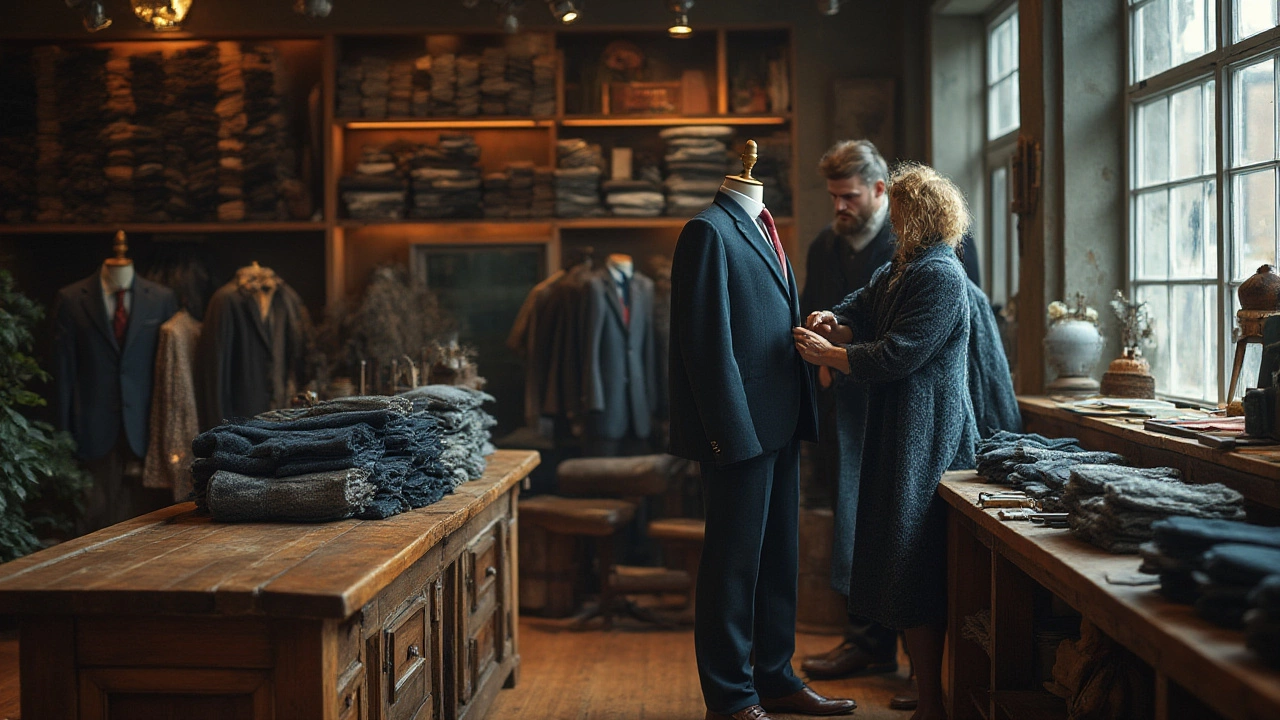
Fabric Choices: Weather-Ready, Irish-Smart, and Timeless
Irish weather has no patience for delicate, high-maintenance fabrics—that’s why suits that last are woven for resilience as much as luxury. Wool is the *strong* cornerstone of an expensive-looking suit here, and it’s not all thick, itchy Donegal tweed (though a bit of local fleck for autumn is a flex in its own right). Pure new wool, often blended with a dash of cashmere or silk, feels soft but holds its shape on the Luas, through last call at Kehoe’s, and after one too many flat whites at Butlers.
Linen suits surge during summer—especially in lighter neutrals that pop against a moody Irish sky—but here’s the trick: high-quality Irish linen, from heritage makers like Magee 1866, is smoother and less prone to unsightly wrinkling compared to cheaper versions. A mid-grey or navy suit in premium wool from Loro Piana or Dugdale Bros may cost you up front, but you’ll feel the return every time the fabric drapes, moves, and springs back from a soak.
Don’t underestimate linings. Expensive suits in Ireland opt for viscose or Bemberg—breathable, anti-static, and miles beyond polyester. You sweat less, the jacket glides on, and you don’t sound like a bin liner when you shift in the pews at a wedding. Also, check the vent: double vents are a clue to thoughtful tailoring and let you move (or perch on a barstool) without rumpling.
If you need a suit that works all year (because let’s be honest—the Irish climate runs from chilly to bone-soaked), go for a 9–12oz wool, fully canvassed. Skip fused (glued) construction at all costs; a half or full canvas allows the suit to mold to your shape over time. Lesser suits start to bubble under Irish drizzle; canvassed ones hold their pattern and maturity, which is why Savile Row tailors from London still get flown in for Cork and Limerick’s fancier fittings.
Here’s a quick comparison of common suit fabrics in Ireland:
| Fabric | Main Advantage | Best Time to Wear | Irish Relevance |
|---|---|---|---|
| Wool | Versatile, drapes well | All year | Resists showers, keeps warm |
| Linen | Cool and light | Late spring/summer | Local tradition; breathable |
| Tweed | Durable, rustic | Autumn/winter | Irish heritage look |
| Blends (Wool-Cashmere) | Luxurious, soft | Winter, formal | High-end events/weddings |
The right fabric is your passport to looking expensive no matter the postcode. And with quick-witted baristas or eagle-eyed aunties routinely checking for shine and wear on elbows, fabrics are as much about social status as comfort.

Details That Don’t Shout: Buttons, Lapels and Local Brands
So, what else sets the expensive suit apart in Ireland? Subtlety is everything. Big gold buttons and OTT lapels can read flashy—instead, real horn or natural corozo buttons quietly hint at quality. Vents, as mentioned earlier, matter. Double vents are standard for Irish suiting and not just for style—think practical movement for taxi hopping and sitting in crowded pubs.
Lapels are another understated tell. In Ireland, a classic notch lapel in moderate width—never too skinny or wide—looks timeless, whether you’re attending the Galway Races or a banking interview at IFSC. Peak lapels are for big days out or really making an entrance; keep those for wow-factor events or groomsmen.
Internally, treat yourself to a pick-stitched edge on lapels or pocket flaps—most Irish tailors will quietly reinforce this by hand, and it wards off the machine-made vibe. Functional (or at least ‘kissing’) buttonholes at the jacket cuff are a tiny flex, signaling to those with taste that you paid attention. If someone quietly asks who made your suit in the cloakroom at the Abbey Theatre, that’s when you know you’ve nailed it.
Don’t obsess over brands, but know your local heroes. Magee 1866 makes suits in Donegal that can go toe-to-toe with any Italian maker on detail, and Louis Copeland & Sons is legendary for both off-the-rack and bespoke options. Those shopping on a leaner budget often turn to Benetti or Remus Uomo for sharpness with Irish tailoring sensibilities—great for newcomers who want style without breaking the Celtic Tiger’s ghost bank. Sports stars and politicians are regularly spotted in bespoke pieces by Conor O’Brien or the creative, gender-neutral tailoring of Aoife Ireland.
Accessories also affect the expensive factor. Irish style leans towards slim, understated ties in quality woven silk, a fine white or pale blue shirt (think Thomas Pink or Saville Row for cut, but Dunnes Collection for those on a budget), and simple, polished shoes. Always opt for leather—not corrections or synthetics, as those will betray your look the fastest when caught in the rain. If you must wear a pocket square, fold a solid Irish linen number for a home-grown twist. And if you’re braving Ireland’s legendary wind, keep a double-breasted overcoat handy—seriously sharp when thrown over a suit on College Green.
Here’s a step-by-step checklist for looking rich in your suit, Irish-style:
- Get it tailored—no excuses. Even off-the-rack needs love.
- Choose natural fabrics (wool, linen, tweed) for breathability and lasting polish.
- Stick with subtle, thoughtful details—horn buttons, double vents, clean lapels.
- Pick local when you can: Magee, Copeland, Benetti, Remus Uomo all ace the basics.
- Keep your shoes simple, clean, and quality. Irish rain loves to test leather.
- Layer with a fine overcoat instead of a bulkier parka or puffer.
- Avoid wild prints or shouty lining unless it’s distinctly Irish.
Anyone can throw on a suit, but the confidence boost and polish that comes from these tiny tweaks—most rooted in Irish tradition and way of life—make the whole look feel premium. Whether it’s the nitpicking of your granny or the friendly side-eye in Blackrock, suiting up with care is never just for show; it’s a statement about knowing—and respecting—the local way.
